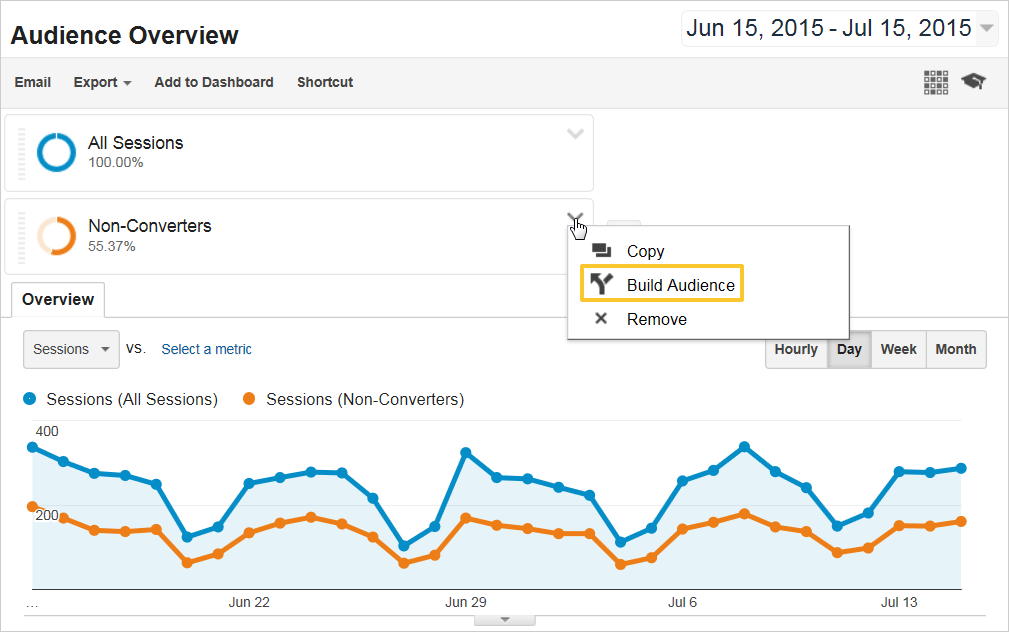How to Take Advantage Of Remarketing In Google Analytics for Your Business
How to Take Advantage Of Remarketing In Google Analytics for Your Business
Blog Article
Reliable Approaches for Remarketing in Google Analytics
In the world of electronic marketing, the realm of remarketing in Google Analytics stands as a crucial tool for businesses intending to enhance their online presence and conversion prices. Via calculated target market division, customized remarketing lists, and interesting ad creatives, services can craft customized projects that resonate with their target market. The true success lies in the capacity to continually improve and enhance these methods based on efficiency metrics and information understandings. By discovering the nuances of dynamic remarketing and leveraging sophisticated tracking devices, businesses can unlock the complete potential of their remarketing efforts, resulting in raised brand exposure and client engagement.
Target Market Segmentation
Making use of audience segmentation is a crucial technique in enhancing the effectiveness of remarketing campaigns within Google Analytics. By splitting your target market right into unique teams based on their habits, demographics, or rate of interests, you can tailor your marketing messages to be a lot more pertinent and appealing. This approach allows you to deliver individualized ads to specific sectors, raising the chance of conversion.
In addition, target market segmentation aids you understand the differing requirements and preferences of various consumer groups, allowing you to craft even more compelling advertisement creatives and offers. This targeted method not just boosts the efficiency of your remarketing initiatives yet also improves total project performance.
Establishing Up Remarketing Lists
To efficiently implement remarketing approaches in Google Analytics, the initial action entails producing targeted remarketing checklists based on particular target market communications. Establishing remarketing checklists allows online marketers to sector their site visitors right into different groups based on their habits, such as pages watched, products looked for, or activities tackled the website. By specifying these segments, online marketers can then produce appropriate and tailored ads that target these details groups, increasing the chance of conversion.
Remarketing checklists can be established up using various requirements such as web page gos to, period of go to, details goal conclusions, or perhaps certain occasions set off on the website. This level of personalization enables marketing professionals to customize their advertisements to match the interests and choices of each fractional audience, resulting in higher involvement and conversion rates.
Furthermore, remarketing checklists can also be developed based on data imported from other resources like CRM systems, allowing for a lot more specific targeting. By establishing up these targeted remarketing lists, marketing experts can effectively get to out to possible customers who have actually already shown passion in their services or products, optimizing the influence of their remarketing campaigns.
Producing Engaging Ad Creatives
After segmenting website site visitors into targeted remarketing listings based upon specific target market communications, the next essential action is to craft compelling advertisement creatives that reverberate with each fractional team's preferences and passions. The performance of remarketing projects heavily depends on the capability of these advertisement creatives to record the interest of the audience and drive them to take the wanted activity.
To create compelling ad creatives, it is vital to recognize the one-of-a-kind features of each fractional team (What Is “Remarketing” In Google Analytics?). Tailoring the messaging, visuals, and uses to straighten with the rate of interests and preferences of the audience can considerably increase the possibilities of conversion. Using dynamic ads that immediately change material based on the customer's actions can also improve the personalization of the ad experience

Tracking Efficiency and Optimization
Effective monitoring of project performance and continual optimization are crucial facets of effective remarketing methods in Google Analytics. To guarantee the efficiency of remarketing campaigns, online marketers must regularly track crucial efficiency metrics such as click-through rates, conversion prices, and return on advertisement invest. By keeping an eye on these metrics, marketers can obtain useful insights right into the performance of their campaigns and identify locations for renovation.
In Google Analytics, online marketers can utilize devices like conversion monitoring and audience segmentation to assess the performance of their remarketing projects. Conversion tracking allows marketers to track certain actions that customers take after clicking on a remarketing ad, providing beneficial data on the performance of the campaign in driving preferred outcomes. Audience division, on the various other hand, enables marketing professionals to separate their audience into various sections based upon numerous requirements such as demographics, behavior, and rate of interests, enabling more targeted and individualized remarketing initiatives.
Continual optimization is crucial for maximizing the impact of remarketing campaigns. Online marketers must make use of A/B testing to try out different advertisement creatives, messaging, and targeting techniques to identify the most reliable approaches. By frequently analyzing project efficiency information and making data-driven optimizations, marketers can useful site ensure that their remarketing campaigns are accomplishing the wanted outcomes and driving conversions effectively.
Leveraging Dynamic Remarketing
Making use of vibrant remarketing can significantly enhance the relevance and influence of targeted advertisements in Google Analytics. This advanced strategy enables marketers to reveal tailored advertisements to customers that have previously seen their web site or utilized their mobile application. By dynamically presenting services or products that the individuals have shown interest in, vibrant remarketing aids to maintain the brand name fresh in their minds and urges them to go back to finish an acquisition.

Additionally, dynamic remarketing campaigns can be automated and maximized in real-time based on efficiency data, making sure that the ads stay efficient and relevant. By leveraging dynamic remarketing in Google Analytics, advertisers can produce much more impactful and targeted ad campaign that reverberate with their target market and drive outcomes.
Verdict
Finally, effective remarketing strategies in Google Analytics entail target market segmentation, targeted remarketing lists, engaging advertisement creatives, performance tracking, and vibrant remarketing. By concentrating on tailored advertisements, data evaluation, and constant optimization, companies can increase conversion prices and drive involvement successfully. Leveraging devices like conversion tracking makes certain that advertisements stay appropriate and tailored, resulting in total success in remarketing efforts.
Via strategic audience segmentation, customized remarketing listings, and engaging advertisement creatives, organizations can craft individualized projects that reverberate with their target audience. Utilizing vibrant advertisements that instantly readjust material based on the user's behavior can likewise enhance the customization of the advertisement experience.
Conversion tracking permits marketing professionals to track specific activities that users take after clicking on a remarketing ad, giving important information on the effectiveness of the project in driving desired outcomes.Making use of vibrant remarketing can considerably Get the facts enhance the importance and impact of targeted advertisements in Google Analytics - What Is “Remarketing” In Google Analytics?.In verdict, efficient remarketing approaches in Google Analytics involve audience division, targeted remarketing lists, compelling advertisement creatives, efficiency tracking, and vibrant remarketing
Report this page